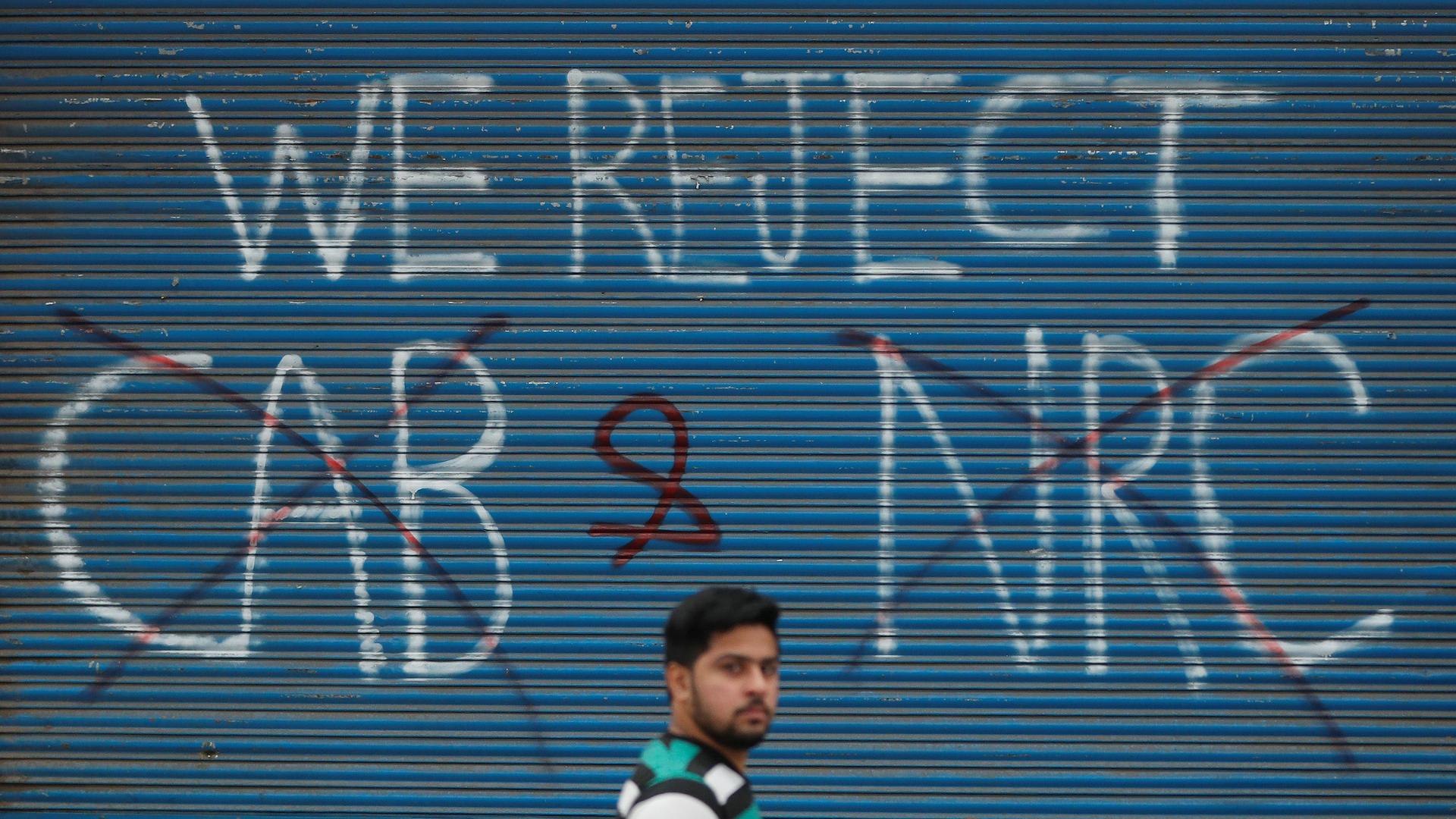The student protests in India are the first major signs of local resistance to the Hindu-nationalist policies of the Modi government.
Amidst the Indian Government’s frenzied attempts to contain the intensification of protests against the Citizenship Amendment Act (CAA), both domestically and internationally, the pent-up anger of Indian citizens grows more palpable.
The massive scale of the police crackdown at Jamia Millia Islamia University (JMI), a minority institution, on December 13 and 15th revealed the fascist tendencies of the current government, utterly shaking up the Indian citizens against the undemocratic and unconstitutional manoeuvre of the Hindu-right nationalistic policies of the BJP regime.
Around 200 students were injured when 40 teargas canisters were fired in a un-ventilated reading room of the library hall of JMI. Female students were ruthlessly beaten, and the scooters and motorcycles of the students were damaged and vandalised by Delhi Police. Lights were switched off as students kept shouting for help, running around in a frenzy. They were snatched out of the campus and beaten.
No case had been registered against Delhi Police officials at the time of writing.
At the same time, Aligarh Muslim University (AMU) campus in Uttar Pradesh, another minority institution, was evacuated and the internet was shut-down. All because these students dared to organise a protest in solidarity with JMI students.
Later, mainstream media started circulating news that AMU students were throwing stones at UP Police officials, which supposedly endowed legitimacy to the police’s lawless actions.
The lack of scrutiny of the Hyderabad Police after gang-rape suspects were killed by police, reveals how police officials in India have power, legitimacy and unwavering impact, which even the judiciary, at times, cannot question.
Nevertheless, for the past three days, hundreds and thousands of protestors have started assembling in various cities of the country. In Delhi, the protests have been expanding even in the chilly weather, at the headquarters of Delhi Police and other significant landmarks like India Gate, Jantar Mantar, and university campuses.
What does this mean?
The atrocious police action against students should not be analysed in isolation. It reveals the emerging socio-political complexities and schisms in India, the largest democracy on earth.
To understand what is happening, we need first to understand the Hindu nationalist rationale of creating an ‘other’ in Indian politics. The decay in India’s economic growth, rising unemployment and insecurity, and how it manifests in the daily lives of ordinary Indians also need to be considered.
After so many human rights abuses, why does the average Indian keep voting for an ultra-nationalistic party?
First, this trend of Delhi Police officials, entering university campuses, ransacking hostels, and beating students is not a new phenomenon. In 2016, when the so-called ‘anti-national’ students of Jawaharlal Nehru Universities were hunted down by blood-thirsty Delhi Police officials, no one questioned why these officials entered a university campus in civilian clothes and conducted a search without warrants.
No one questioned why the 1,000-acre campus was barricaded for days under heavy police presence.
The discourse that immediately developed was that JNU was a bastion of the left where students survive on taxpayer’s money. And so, they were ‘otherised’ and therefore deserved to be arrested, detained.
When the revocation of Jammu and Kashmir’s autonomous status shot into the international limelight, an internet shutdown was immediately implemented to create a media blackout.
Kashmiri Muslims, often branded as ‘pro-Pakistan’ and ‘terrorists’ were the ‘other’ in that episode. The intensification of army personnel and border security forces was justified as a means to prevent another Pulwama attack. That was when the government exploited the so-called binary between Hindi and Muslims. But such binaries, as far as Indian politics is considered, are nothing more than vote-bank politics.
The BJP also defended the Ayodhya judgment by the Supreme Court and bagged laurels for resolving the long-standing religious dispute. What hardly gained any attention was the lack of dissent within the Supreme Court, which brings its independence into question.
Yet the citizens did not come out on the streets, as frankly, it was just the ‘other’, the Muslims, under the thumb again.
But the tables turned with the passing of the Citizen Amendment Act in the Indian parliament.
What changed with CAA is that it is against many minorities, like women and poor people, too. Even Hindus, who fled to India after partition, might not even have a birth certificate. How could they prove their citizenship? The bureaucratic hurdles, tribunals, corruption, and lawlessness rampant in the country are quite clear.
Adding fuel to the fire, was the barbaric encounter of the police with students.
This time, there was not just one ‘other’ created. There were too many others, being constructed simultaneously. Like, ‘women’, ‘Dalits’, ‘poor people’ and again, ‘Muslims’.
This pent-up anger, fear, and frustration suffered by India’s citizens might be reaching a breaking point. The fickle-memory of India, on December 16, somehow reminded itself of the Nirbhaya Rape Case of 2012 and the power of protest.
Today, Indian lawyers are demanding a case against the police officials responsible for the bloodshed. Be it north-eastern Indian states, Jammu and Kashmir or the capital, citizens are revolting against the farce of democracy implemented in India tody.
For the first time, the ‘other’ is coming to the fore.
Today, the fight is about protecting secularism, irrespective of the political mudslinging done by parties. The protestors, regardless of their caste, class, race, and gender are anticipating a massive crackdown along communal lines in India. But that’s a test. Until then, hope continues.
Author: Shubhda Chaudhary
Shubhda Chaudhary is a freelance journalist and academic based in New Delhi, India.
Source










Discussion about this post